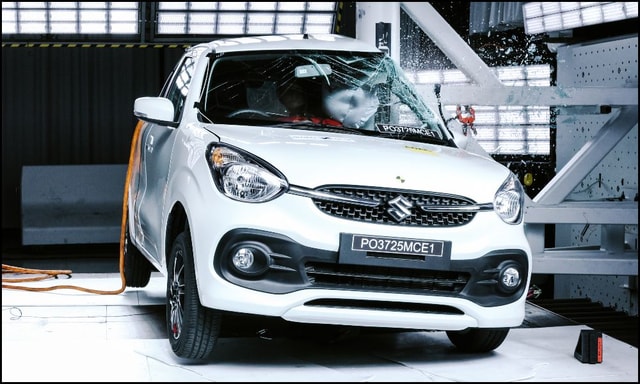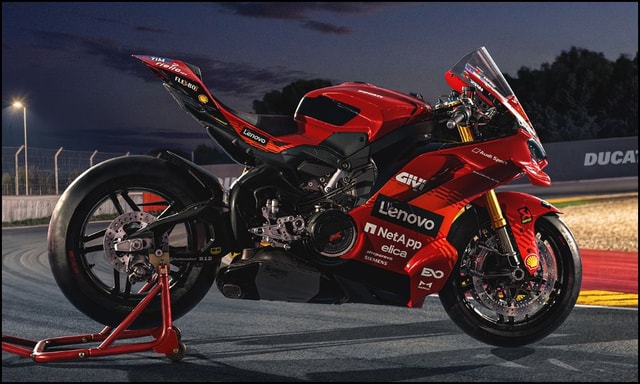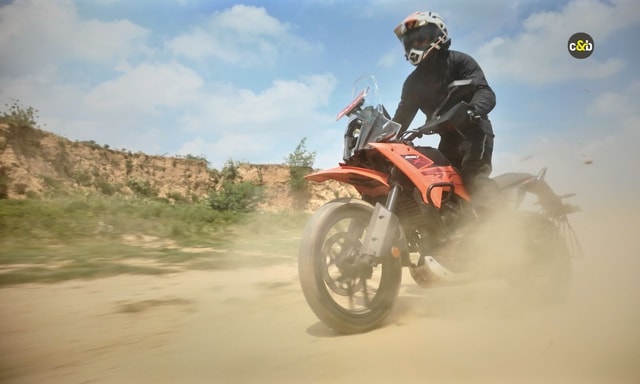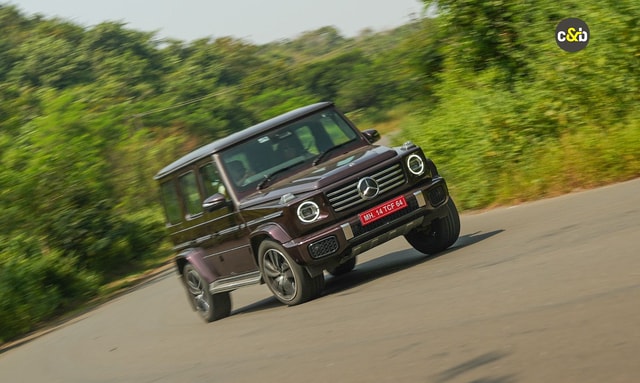How A War-Time Transport Delivered Freedom To Indian Women - History Of The Scooter

- Entry of scooters into the Indian market.
- Early manufacturers of scooters in India and innovation in the industry
- Role of the scooters in womens freedom in India.

Photo Credit: unsplash.com
India is the second largest manufacturer and consumer of gearless two wheelers, a market where scooters hold a very special spot. People prefer scooters for various reasons like ease in mobility in the narrow lanes of Indian neighbourhoods, easy parking spaces and increased personal mobility. Scooters are also quite popular among women as they are an easy and safe way of transportation. In fact, many scooter brands today cater primarily to women. Let's take a look at the history of scooter in India and how it impacted Indian households.
Scooter enters the Indian Market
Scooters saw regular use during World War 2 in military bases for their messenger services. Some were even designed to be dropped by parachute with army airborne troops for use after landing. But they truly gained global popularity post-war when the roads in Europe were largely destroyed due to saturated bombing. Many aviation manufacturers, seeing a giant dip in demand for planes , also turned to scooter manufacturing to earn money. The Italians started using Vespa scooters, manufactured by Piaggio, to navigate the tough conditions of post-war Italy. It gained immense popularity and in 1948, Bajaj Auto imported the Vespa Scooter to India and gave Indians a new, affordable way to be on the road.
Initially, the scooters gained tremendous response in the Indian market and formed a major share of the Indian automobiles industry. Looking at the growing potential of two wheelers in India, API (Automobile Products of India) ventured into the scooter market and started producing home-grown scooters in the 50s. The next company to enter this lane was Enfield. In the 60s Bajaj Auto started manufacturing scooters as well, but they were not independent manufacturers like the competitors as they were in partnership with Piaggio.

Photo Credit: www.pexels.com
Also Read: 9 Uber-Rich Celebs Who Prefer Their Practical Toyota Cars For Daily Transport
Era of the gearless scooter
History of Scooter in India entered a new phase when scooters started losing their popularity in India during the late 70s and early 80s when motorcycles took over the roads and the attention of Indian men. Scooters were heavy and had clutch and gears, and were designed that way because they were mostly ridden by men. With the onset of the motorcycle craze, scooters started losing popularity. It is then that the manufacturers shifted their scope and started looking at something that's lighter and easier to drive. A scooter that anybody in the family could ride – from older men to women.
Kinetic had already had some success with the slender Luna moped being used by both younger and older women in addition to men. However, when it collaborated with Honda to produce gearless scooters with automatic transmission, it wanted to come out with a uni-sexual product. Unlike their predecessors, these new scooters were lighter with a sleek design. The electric start came almost a decade later, but even the kick start in the earlier models were advertised to be much easier than that of the heavier scooters like Bajaj. It now became easier for women to go anywhere and run errands that they previously couldn't and drop kids off to school etc.
Women on the scooter
After the success of Kinetic in the gearless scooter market, TVS entered the fray with an even lighter ‘Scooty'. Two years into its launch, TVS discovered that a big percentage of their buyers were women. So in 1996, TVS took a big calculated risk and decided to market Scooty for women only. The new ad messaging was aspirational, a means of freedom and joy for young girls and working women. To make good on their new gamble, they started training schools for women in tier 2 cities and towns. They also introduced the Scooty pep variants in colours more appealing to women. Today, scooters have almost become synonymous with transport for women. Whether it be the college girl who wants a flashy ride, the home-makers and working women who need a scooter for errands or the girls and women in remote towns and villages who need to travel long distances to grow their small-scale businesses and careers. The scooter today is a means for these women to stand on their feet, be independent and express themselves freely. Scooters, today, are being produced with high functionality and support for women drivers. When Hero introduced its ‘Pleasure' with the tagline ‘Why should boys have all the fun', it gave a very clear message. With scooters women can go anywhere, when they want and with whoever they want. Owning a scooter has become an important part of women's lives in India, enabling them to accomplish more in the society.

Photo Credit: www.chetak.com
Also Read: 4 Popular Old Indian Scooters That Originated From Italy
Due to continuous innovation and growing need for affordable transportation, scooters will always have a place in the Indian market. It is one of the reasons why brands like Bajaj are resurrecting their old scooter models like Chetak for the Indian market.
Trending News
 1 min readYamaha YZF-R2 Name Trademarked In India
1 min readYamaha YZF-R2 Name Trademarked In India
Latest News
 car&bike Team | Dec 22, 2025Maruti Suzuki Celerio Secures Three-Star Rating In Global NCAP Crash TestsSix airbags-equipped model secured a three-star adult and two-star child occupant protection rating; the dual airbag model scored a two-star rating.3 mins read
car&bike Team | Dec 22, 2025Maruti Suzuki Celerio Secures Three-Star Rating In Global NCAP Crash TestsSix airbags-equipped model secured a three-star adult and two-star child occupant protection rating; the dual airbag model scored a two-star rating.3 mins read car&bike Team | Dec 22, 2025KTM 390 Adventure X, 390 Enduro R Recalled Over Side Stand IssueKTM has issued a global recall for select 390 models after identifying a side stand spring failure caused by engine vibrations.2 mins read
car&bike Team | Dec 22, 2025KTM 390 Adventure X, 390 Enduro R Recalled Over Side Stand IssueKTM has issued a global recall for select 390 models after identifying a side stand spring failure caused by engine vibrations.2 mins read Carandbike Team | Dec 22, 2025Tata Harrier, Safari Petrol Variant Details Revealed: Get New Range Topping Ultra TrimThe much-awaited petrol variants of the Harrier and Safari are powered by a more powerful iteration of the 1.5 turbo-petrol engine from the Sierra.1 min read
Carandbike Team | Dec 22, 2025Tata Harrier, Safari Petrol Variant Details Revealed: Get New Range Topping Ultra TrimThe much-awaited petrol variants of the Harrier and Safari are powered by a more powerful iteration of the 1.5 turbo-petrol engine from the Sierra.1 min read Jaiveer Mehra | Dec 21, 2025New Limited-Run Ducati Panigale V4 Marquez 2025 World Champion Replica RevealedSpecial edition Panigale V4 commemorates Marc Marquez's 2025 MotoGP Rider’s title.1 min read
Jaiveer Mehra | Dec 21, 2025New Limited-Run Ducati Panigale V4 Marquez 2025 World Champion Replica RevealedSpecial edition Panigale V4 commemorates Marc Marquez's 2025 MotoGP Rider’s title.1 min read car&bike Team | Dec 21, 2025KTM To Host First Adventure Rally In India In Feb 2026KTM also announced a third season of its KTM Cup for India, which commences in January 2026.1 min read
car&bike Team | Dec 21, 2025KTM To Host First Adventure Rally In India In Feb 2026KTM also announced a third season of its KTM Cup for India, which commences in January 2026.1 min read car&bike Team | Dec 20, 2025KTM 390 Adventure R To Be Launched In January 2026Bookings for the KTM 390 Adventure R are expected to open very soon, wit deliveries beginning in January 2026.2 mins read
car&bike Team | Dec 20, 2025KTM 390 Adventure R To Be Launched In January 2026Bookings for the KTM 390 Adventure R are expected to open very soon, wit deliveries beginning in January 2026.2 mins read
 Seshan Vijayraghvan | Dec 22, 20252026 Tata Harrier & Safari 1.5 Hyperion Review: By The Power Of Petrol!The new Tata Harrier and Safari petrol packs a new 1.5-litre TGDI Hyperion engine, but is it an ideal alternative to the diesel version?7 mins read
Seshan Vijayraghvan | Dec 22, 20252026 Tata Harrier & Safari 1.5 Hyperion Review: By The Power Of Petrol!The new Tata Harrier and Safari petrol packs a new 1.5-litre TGDI Hyperion engine, but is it an ideal alternative to the diesel version?7 mins read Bilal Firfiray | Dec 19, 2025Maruti Suzuki e-Vitara Review: Worth The Wait?After a long wait, the first-ever electric Maruti Suzuki is here. It’s the e-Vitara, and it comes with a few promises. But arriving this late, is it worth the wait? Or is it a case of too little, too late?9 mins read
Bilal Firfiray | Dec 19, 2025Maruti Suzuki e-Vitara Review: Worth The Wait?After a long wait, the first-ever electric Maruti Suzuki is here. It’s the e-Vitara, and it comes with a few promises. But arriving this late, is it worth the wait? Or is it a case of too little, too late?9 mins read Bilal Firfiray | Dec 18, 2025Mercedes-Benz G450d: The Subtle Power of EvolutionThe Mercedes-Benz G 450d evolves subtly with more power, improved efficiency, and modern tech, while staying true to the timeless G-Class design. And character.4 mins read
Bilal Firfiray | Dec 18, 2025Mercedes-Benz G450d: The Subtle Power of EvolutionThe Mercedes-Benz G 450d evolves subtly with more power, improved efficiency, and modern tech, while staying true to the timeless G-Class design. And character.4 mins read Janak Sorap | Dec 11, 2025Harley-Davidson X440 T First Ride Review: Smarter and SharperHarley-Davidson has taken the X440 and given it a more focused and engaging twist. The result is the X440 T—essentially the same platform but updated in areas that give the motorcycle more appeal and riders more thrill.5 mins read
Janak Sorap | Dec 11, 2025Harley-Davidson X440 T First Ride Review: Smarter and SharperHarley-Davidson has taken the X440 and given it a more focused and engaging twist. The result is the X440 T—essentially the same platform but updated in areas that give the motorcycle more appeal and riders more thrill.5 mins read Shams Raza Naqvi | Dec 10, 20252025 Mini Cooper Convertible Review: More Colour On Indian RoadsThe updated Mini Cooper Convertible is set to be launched in the Indian market in the next few days. We drive it around Jaisalmer for a quick review.5 mins read
Shams Raza Naqvi | Dec 10, 20252025 Mini Cooper Convertible Review: More Colour On Indian RoadsThe updated Mini Cooper Convertible is set to be launched in the Indian market in the next few days. We drive it around Jaisalmer for a quick review.5 mins read































































































































